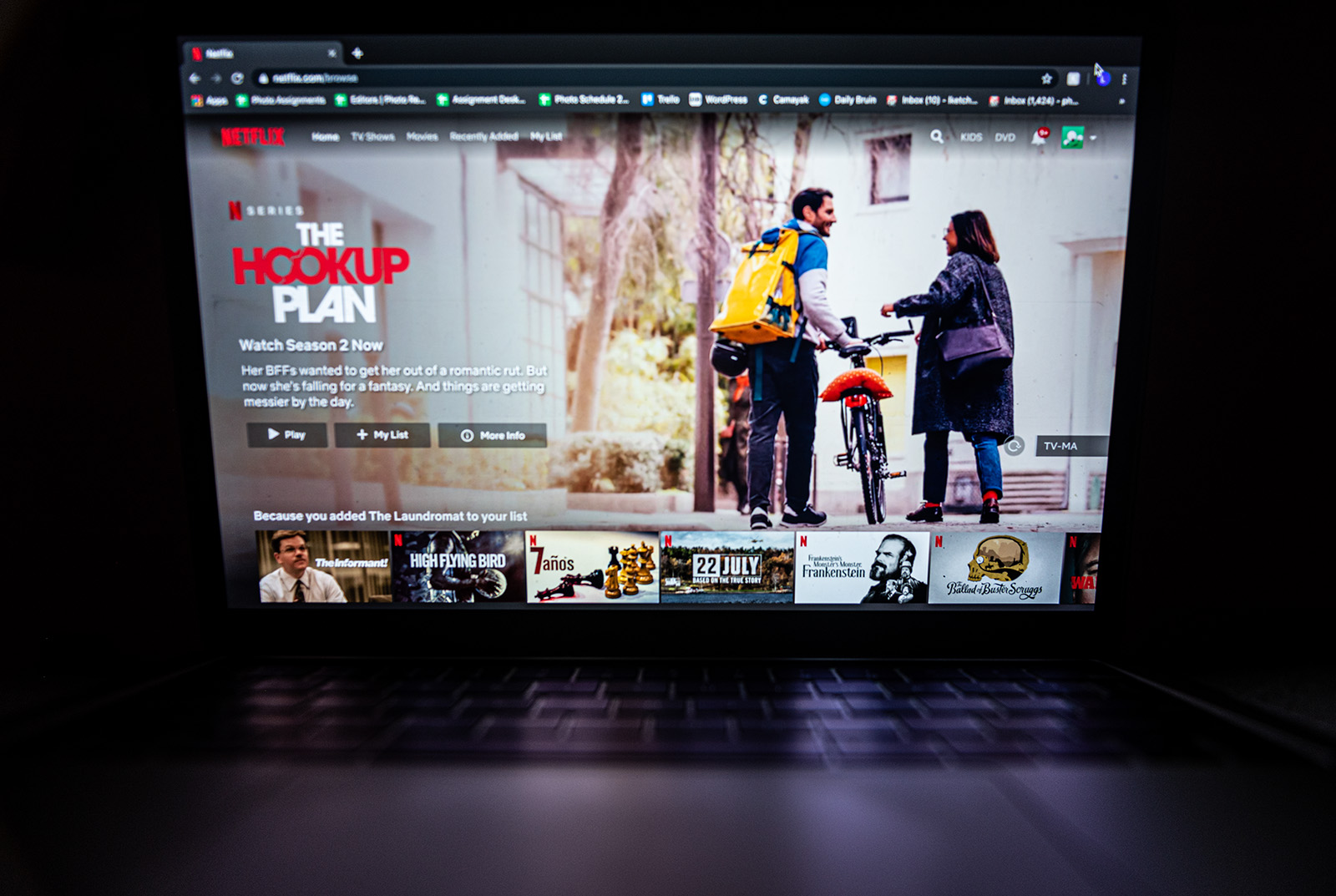Second Take: Streaming services will saturate already substantial market, overwhelming subscribers

Disney+ and Apple TV+ are two upcoming streaming services that will be in competition with Netflix. In recent months, Disney has been pulling its content from other streaming services in preparation to put it on its own platform, which will offer classic Disney content as well as new film and television shows. (Liz Ketcham/Photo editor)

By Paige Hua
Oct. 22, 2019 11:07 p.m.
This post was updated Oct. 23 at 10:04 a.m.
Sometimes the sheer volume of options becomes so overwhelming that consumers choose nothing at all.
Netflix subscribers are no strangers to this sensation. The streaming giant, whose vision is to be “the world’s best entertainment distribution platform,” houses around 5,500 movies and television shows combined as of 2018, providing viewers with a plethora of options. However, for subscribers, sometimes that number is more taxing than exciting. Opening up the Netflix homepage, there are times when scrolling through hundreds and thousands of options leaves viewers exhausted. And rather than choosing content to consume, they choose to turn the TV off.
Come Nov. 1 and Nov. 12, Netflix will no longer be the sole perpetrator of this effect, as the amount of content available will rise with the entrances of Apple TV+ and Disney+, respectively, into the market. And while Apple’s CEO Tim Cook insists the streaming service will differ from the likes of Netflix, Hulu and Amazon Prime Video, it is still a paid service offering consumers more original content in an already large pool. But a larger pool doesn’t necessarily equate a better one.
[Related: Second Take: ‘Looking for Alaska’ Hulu series fails to find fleshed out female protagonist]
However, Disney+ is also operating similarly to Apple TV+, as the platform provides its own take on original and classic films and television shows. Fans are eagerly awaiting the release of not only Disney’s past Princess and “Avengers” movies, but also shows like the “Star Wars” spinoff “The Mandalorian” and “High School Musical: The Musical: The Series.”
While the supply of original content is thrilling, the thought of paying to utilize each individual platform becomes daunting. Apple TV+ and Disney+ are releasing their services with subscription fees of $4.99 per month and $6.99 per month, respectively. These two prices are in direct competition with Netflix’s lowest subscription of $8.99 per month, Hulu’s $5.99 per month and Amazon Prime’s $12.99 per month. With all these subscription prices within the same range, it becomes painfully clear that both of November’s newest content providers will enter an already saturated market.
This wouldn’t necessarily be a negative thing – competition is the keystone to a capitalist economy – but it very well could be detrimental when the market in question is that of storytelling. Storytelling through film and television is an art form, and like any other art form, a proper story takes time to tell.
With rising competition, the primary concern of these streaming giants won’t be quality, but quantity. Netflix reported being $12.43 billion in debt as of Sept. 30, and that number is already projected to rise by $2 billion by the end of 2019. By raising its allotted budget on content production despite its debt, Netflix is providing clear signs that it doesn’t intend to be outdone by the increase in competition.
[Related: UCLA music school admin to speak on Orwellian power of streaming industry]
But even more worrying is the fact that Netflix’s competitors aren’t the type to bow out either. Disney+ is certainly milking its own platform as it has already begun removing films like “Moana,” “Coco” and “Incredibles 2” from Netflix, arguably taking that audience demographic with them. It isn’t far-fetched to say the next couple months and years will result in a large rivalry as these streaming services begin hoarding all of their own original content.
Soon, viewers won’t just have to contend with Netflix’s growing homepage, but also the selections of four other streaming services. As the quantity of content increases, these projects need directors, writers, actors, producers and an army of assistants behind them as well. While this seems promising for Hollywood hopefuls, viewers should perhaps be reminded of why the entertainment industry used to be so lucrative – artists and writers, the good ones, are rare. After all, there is only one Steven Spielberg.
If streaming services are offering content for the sake of content, then it goes without saying that the amount of films, television shows and artists that are actually of substance, that people care about, will lessen even as the quantity of them increases. Therefore, while the idea of more original content might sound appealing, consumers should remind themselves what is usually sacrificed in mass production: quality.
The future of oversaturated streaming might see viewers turning away from television and laptop screens that are simply offering too much, too often.

